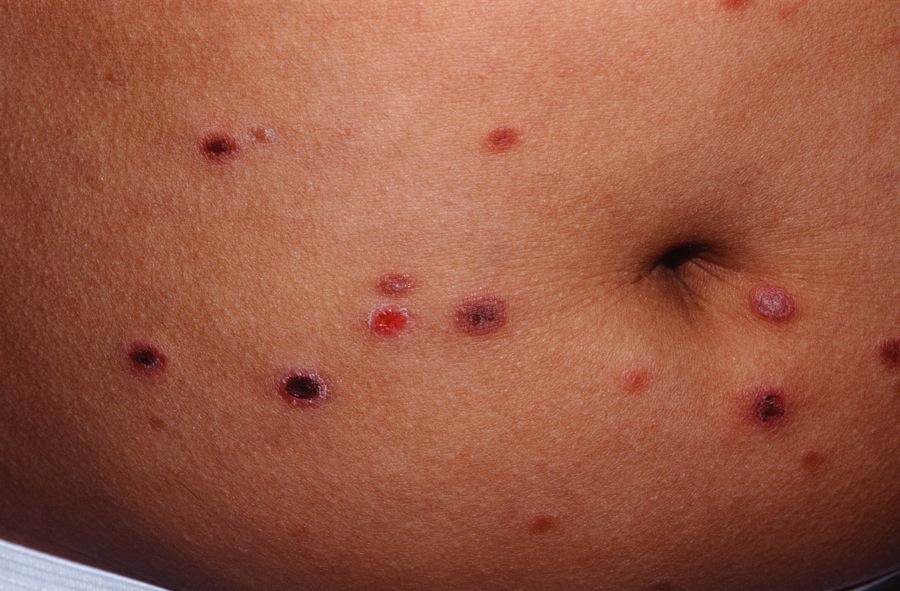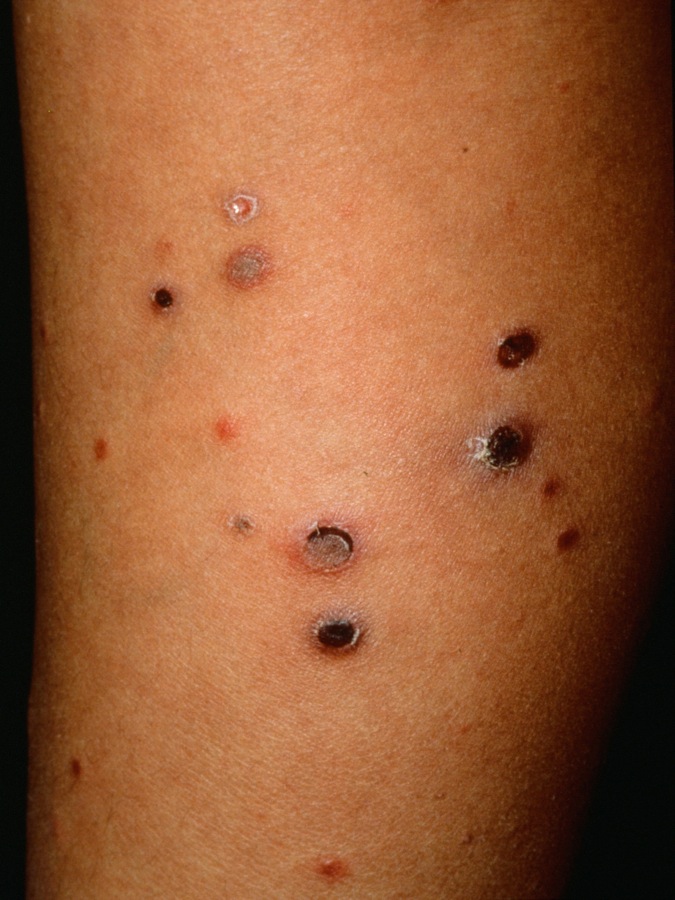
A 6-year-old presents with this diffuse rash.
PITYRIASIS LICHENOIDES AND PLEVA
Pityriasis lichenoides (PL) is a skin condition that manifests in either the acute (pityriasis lichenoides et varioliformis acuta or PLEVA) or the chronic form (pityriasis lichenoides chronica or PLC).
- The age of onset is from 1 year to old age, although it is most common in the first 3 decades.
- In one study, the average age of patients with PLEVA was 6.5 years.
- The disease may last from months to decades, often with lesions coming in crops.
- Evidence for viral involvement has included coexistent influenza, EBV acutely elevated titers, associated infectious mononucleosis, adenovirus isolated from the urine, a measles vaccine (live attenuated) 5 days prior, and herpes zoster infection 2 weeks prior.
- Some cases have been found to have atypical CD 30+ cells. Spontaneous resolution may mean the immune system eliminated this clone. Progression to lymphoma may mean that this clone progressed.
- Two children with lesions similar to pityriasis lichenoides have developed lymphoma. Another report describes 3 children with CTCL that resembled pityriasis lichenoides.
Multiple, disseminated, red, scaly papules and hemorrhagic necrotic lesions are characteristic. They are widespread but are often concentrated on the lower trunk and buttocks. Fever and constitutional symptoms may accompany the outbreaks.
Differential Diagnosis
Always consider secondary syphilis which can look nearly identical.

RegionalDerm
Homepage | Who is Dr. White? | Privacy Policy | FAQs | Use of Images | Contact Dr. White
It is not the intention of RegionalDerm.com to provide specific medical advice, diagnosis or treatment. RegionalDerm.com only intends to provide users with information regarding various medical conditions for educational purposes and will not provide specific medical advice. Information on RegionalDerm.com is not intended as a substitute for seeking medical treatment and you should always seek the advice of a qualified healthcare provider for diagnosis and for answers to your individual questions. Information contained on RegionalDerm.com should never cause you to disregard professional medical advice or delay seeking treatment. If you live in the United States and believe you are having a medical emergency call 911 immediately.

